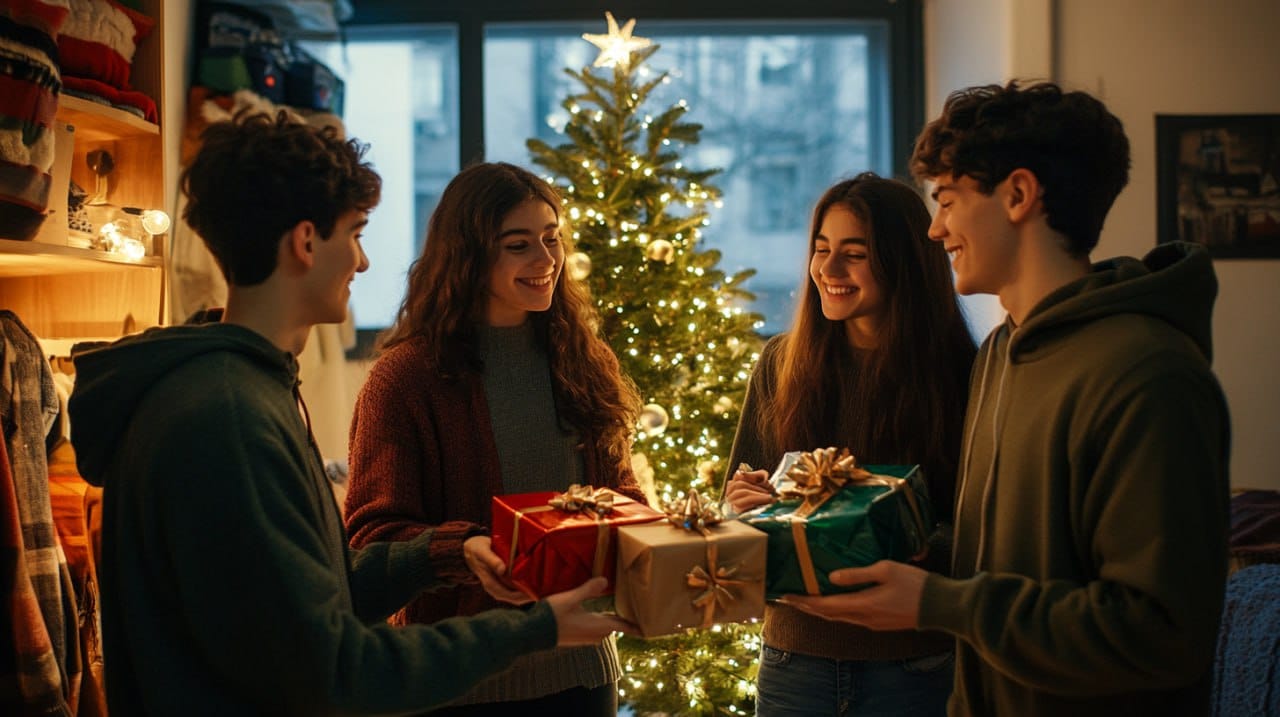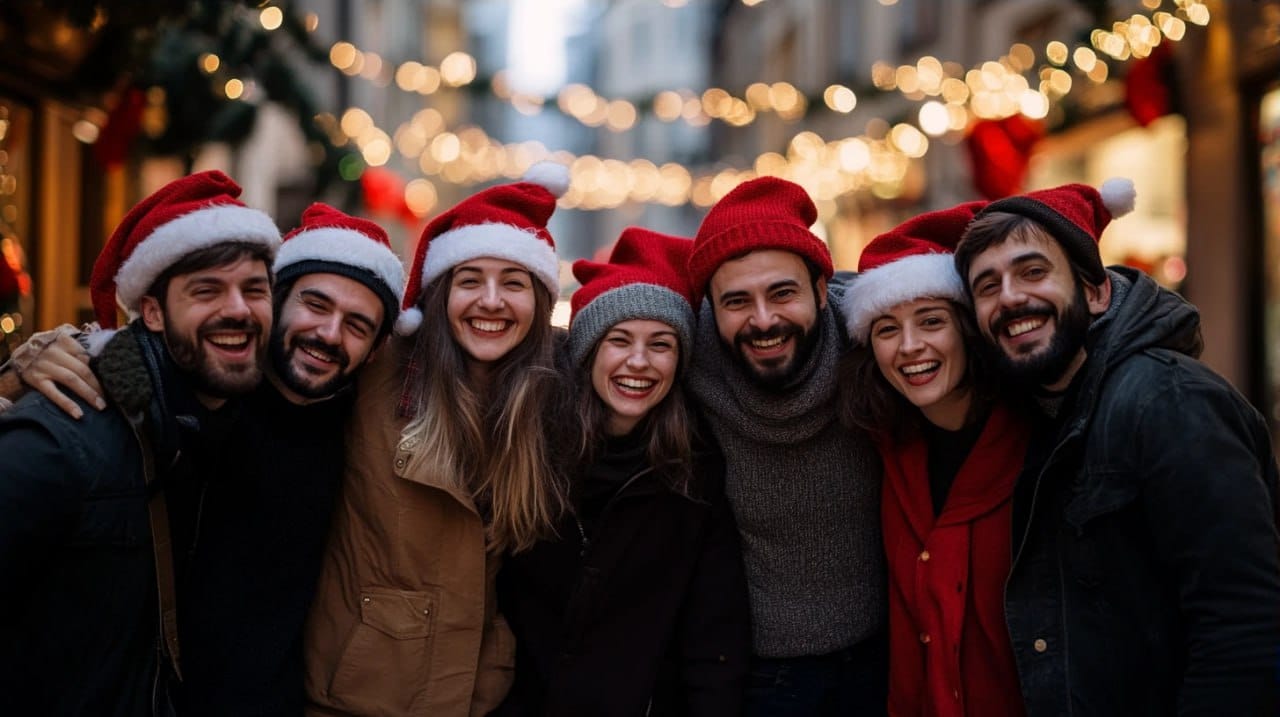16 Christmas traditions around the world
Around the world, Christmas traditions emphasize the core values of generosity, love, and kindness, though the ways of celebration may differ. In this article, we will explore how Christmas is celebrated in different countries in the world.
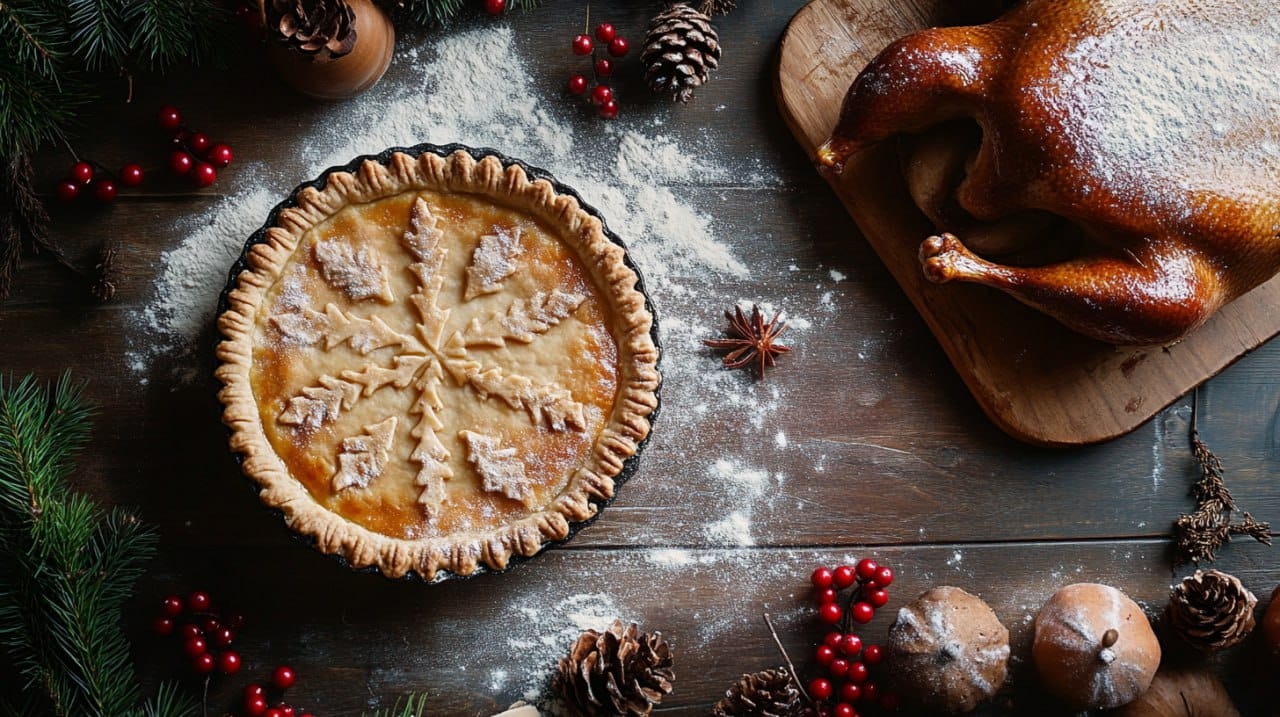
Discover the ways people celebrate the holiday, including popular Christmas dishes, rituals, and special characters associated with it.
United States
In the USA, Christmas is widely celebrated with a blend of religious and secular traditions. Many families attend church services on Christmas Eve or Christmas Day to mark the birth of Jesus. People decorate their Christmas trees with lights and ornaments, while children eagerly await Santa Claus, who is believed to deliver gifts on Christmas Eve. Festive meals include dishes like roast turkey, ham, and pies.
Secret Santa gift exchanges are popular in the United States, especially in workplaces, schools, and among families and friends. You can organize a Secret Santa with anyone you choose.
To play Secret Santa, you can use a hat or a box with the pieces of paper — every participant can pick the paper with the name of the gift recipient. Yet, it is more convenient to use an online organizer than to write the names of participants on paper — now you can invite participants via email and draw names with a single click. Participants can also add their gift wishes in the generator, making it easy to rely on their preferences.

Australia
What is special about Christmas celebrations in Australia is that they take place during the summer season, so celebrations are often centered around outdoor activities like barbecues, picnics, and trips to the beach. Instead of snow, people enjoy sunny weather, making festive meals featuring seafood, cold meats, and salads a common tradition.
What activities are common in Australia during Christmas?
Many Australians head to the beach for a swim or beach games, taking advantage of the warm summer weather. Cricket matches are a classic tradition, with people playing in parks or on beaches after their Christmas meals. In the evening, families gather for a relaxed meal, exchange gifts, and enjoy Christmas lights and other decorations in neighborhoods.

Ireland
Christmas in Ireland is rich with unique traditions that blend religious, cultural, and seasonal customs. One of the most cute traditions is the act of leaving a candle in the window on Christmas Eve, symbolizing warmth and welcome for Mary and Joseph, as well as honoring Irish hospitality.
Midnight Mass on Christmas Eve is a deeply significant event in Ireland, often followed by a family gathering with a hearty Christmas feast featuring turkey, ham, potatoes, and Christmas pudding. Many Irish homes are decorated with holly and ivy, which symbolize good luck and protection. Tourists can soak in the festive atmosphere by visiting authentic Christmas markets, sampling local delicacies, purchasing unique trinkets, and embracing the Christmas spirit.
Italy
In Italy, Christmas preparations begin in early December, with streets decorated with twinkling lights, festive markets, and beautifully crafted nativity scenes (presepi) displayed in homes and churches. Families gather on Christmas Eve for a traditional dinner, often featuring seafood, followed by Midnight Mass, a cherished religious tradition. On Christmas Day, people gather for a grand feast, enjoying dishes like lasagna, roasted meats, and panettone.
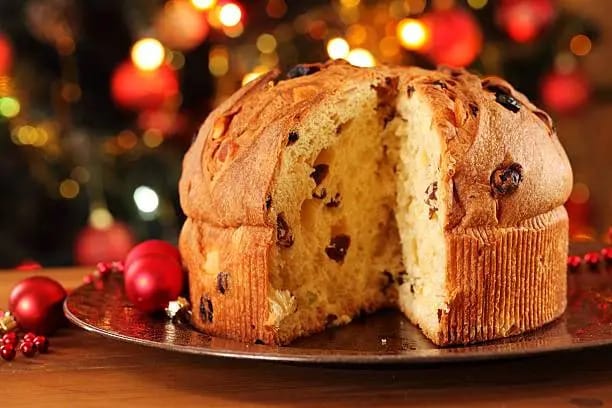
3 fun facts about Christmas celebrations in Italy:
1. The tradition of La Befana involves an old witch who visits children on January 6th, bringing gifts or coal depending on whether they have been naughty or nice. Unlike Santa Claus, La Befana is said to fly on a broomstick, delivering her treats to children through the chimney.
2. Italians also have a lighthearted tradition of indulging in large festive meals — so much so that it is often joked that one might need to loosen their belt after the Christmas Eve feast.
3. In some regions, friendly debates arise over who makes the best panettone (the traditional Christmas cake), with families fiercely guarding their recipes. These charming traditions bring warmth and a touch of humor to the Italian holiday season.
Germany
One of the most important traditions in Germany is Christmas markets called "Weihnachtsmärkte" which transform town squares into festive winter wonderlands. These markets, which date back to the Middle Ages, feature charming wooden stalls selling handmade crafts, Christmas decorations, and seasonal treats like gingerbread (Lebkuchen), roasted almonds, and bratwurst (grilled sausage). Visitors can enjoy hot mulled wine (Glühwein) while listening to carol singers and admiring twinkling lights.
Kids also have fun and anticipate the holiday season. On December 6th, kids place their shoes out for Sankt Nikolaus, who fills them with treats if they have been well-behaved. Christmas Eve is the main day for gift-giving, with gifts brought by either Christkind (Christ Child) or Weihnachtsmann (Santa Claus), depending on the region.
Spain
The Christmas season in Spain is filled with unique traditions, beginning with La Nochebuena (Christmas Eve), when people enjoy a grand feast and attend midnight Mass. While Santa Claus is known in Spain, many children traditionally receive gifts on January 6th from Los Reyes Magos (the Three Wise Men), who parade through cities on the eve of Epiphany. A popular treat during the season is Roscón de Reyes, a sweet ring-shaped cake with hidden surprises inside.
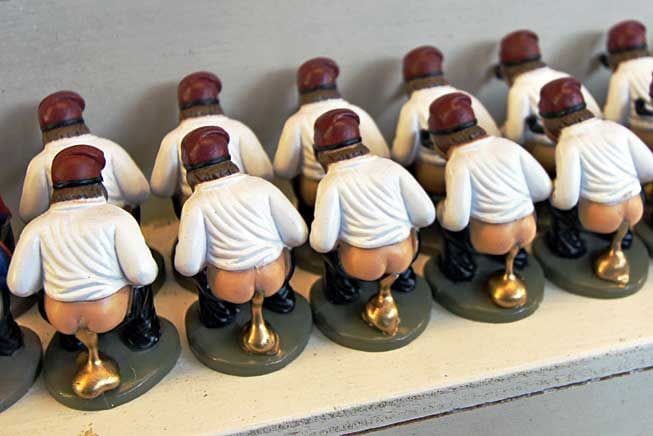
Brazil
Christmas in Brazil is a vibrant celebration influenced by Portuguese traditions and local culture. Families gather on Christmas Eve for a late-night feast called Ceia de Natal and say Feliz Natal to each other (Merry Christmas).
At midnight, many Brazilians attend Missa do Galo (Midnight Mass) and exchange gifts. Decorations include nativity scenes (presépios), Christmas lights, and artificial snow, despite the warm summer weather. In some regions, Santa Claus (Papai Noel) is said to wear lighter clothing to suit the tropical climate.
In Brazil, Christmas meals are a festive blend of traditional and international flavors. Some popular dishes include:
- Peru assado — Roasted turkey, often marinated with spices and served with tropical fruits.
- Chester — A special type of plump roast chicken that is very popular during Christmas.
- Farofa — A toasted flour dish mixed with bacon, raisins, and nuts, served as a side.
- Arroz à grega — A colorful rice dish cooked with vegetables, raisins, and sometimes nuts.
- Salpicão — A cold salad made with shredded chicken, vegetables, mayonnaise, and potato sticks.
- Bacalhau — Salted codfish, often baked with potatoes, onions, olives, and eggs.
- Rabanada — A Brazilian-style French toast, deep-fried and coated with cinnamon and sugar.
- Panetone — A sweet Italian bread filled with dried fruits or chocolate, widely enjoyed across Brazil.
Mexico
One amazing fact about Christmas in Mexico is the celebration of Las Posadas, a nine-night festival from December 16 to 24 that reenacts Mary and Joseph’s search for shelter in Bethlehem. Each night, families and communities hold processions with candles and singing, ending with a festive gathering. This tradition blends Spanish Catholic influences with indigenous customs, making Mexican Christmas celebrations uniquely vibrant and rich in tradition.
On Christmas Eve (Nochebuena), families gather for a grand feast. While Santa Claus (Papá Noel) is present in some households, many children receive gifts on January 6 from Los Reyes Magos (the Three Wise Men) in celebration of Epiphany. Another sweet tradition is Rosca de Reyes, a ring-shaped cake with a hidden figurine of baby Jesus inside. Whoever finds it is expected to host a gathering on Día de la Candelaria (February 2).
Common Christmas meals in Mexico include tamales, bacalao a la Vizcaína, romeritos, and ponche navideño. Tamales are steamed corn dough filled with meats, cheese, or chilies, bacalao a la Vizcaína is a savory cod dish with tomatoes and olives, romeritos are wild greens cooked in mole sauce with shrimp cakes, and ponche navideño is a warm fruit punch made with guavas, tamarind, and cinnamon.
Norway
In Norway, the Advent season is marked by lighting a candle on each of the four Sundays leading up to Christmas, symbolizing hope, peace, joy, and love. Many families also use Advent calendars filled with chocolates or small gifts to count down the days until Christmas Eve.The holiday season continues until Little Christmas Eve (December 23rd) and even beyond, with gatherings, feasts, and cozy winter traditions.
Two unique traditions about Christmas celebration in Norway:
- Little Christmas Eve (Lille Julaften) — Celebrated on December 23rd, this special day is dedicated to final holiday preparations. Families decorate the Christmas tree, make gingerbread houses (pepperkakehus), and enjoy risgrot (rice porridge), which contains a hidden almond — whoever finds it is said to have good luck in the coming year.
- Hiding Brooms on Christmas Eve — An old Norwegian superstition suggests that witches and evil spirits roam on Christmas Eve looking for brooms to ride. To prevent mischief, many families hide their brooms and mops before going to bed.
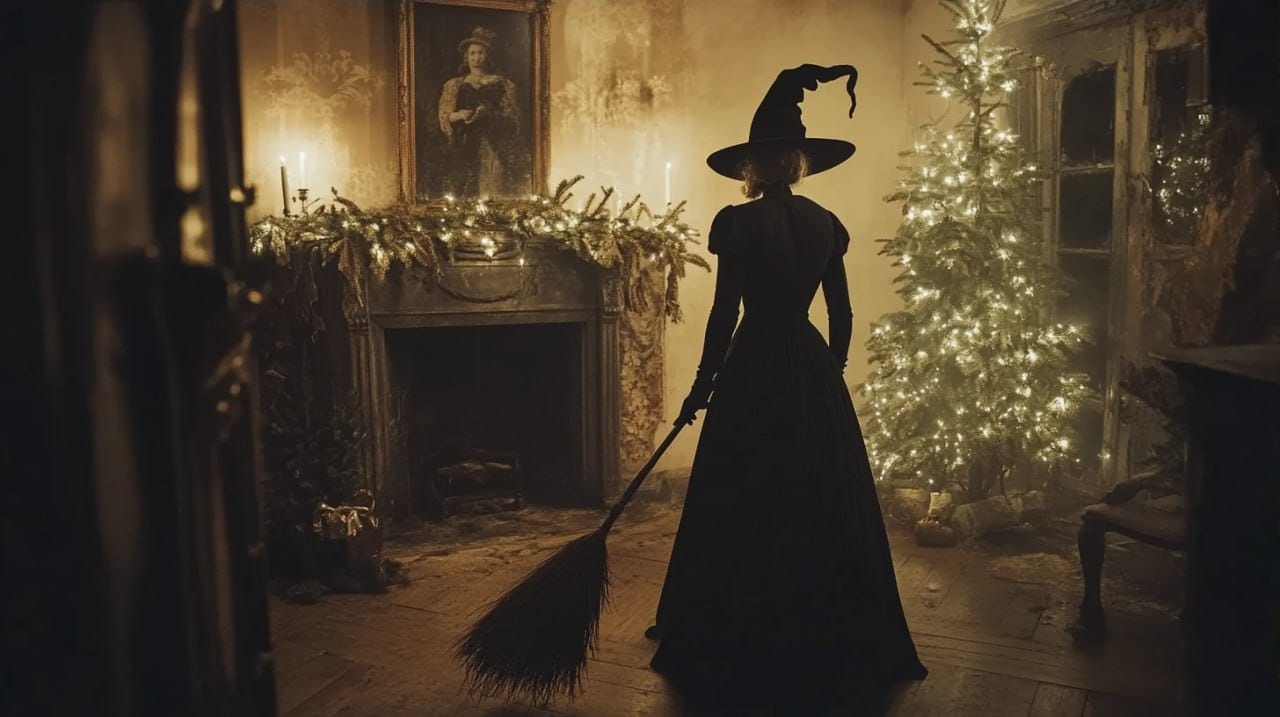
Colombia
One of the most unique Christmas traditions in Colombia is Día de las Velitas (Day of the Little Candles), celebrated on the night of December 7th. Families light candles and lanterns in their homes, streets, and public spaces to honor the Virgin Mary and mark the beginning of the Christmas season. This tradition transforms cities and towns into beautiful glowing landscapes, symbolizing hope and faith.
Another most beloved custom is Novena de Aguinaldos, a nine-day prayer ritual from December 16th to 24th, where families and friends gather to pray, sing Christmas carols, and enjoy festive foods. On Nochebuena (Christmas Eve), Colombians celebrate with grand feasts, fireworks, and music, staying up until midnight to exchange gifts and welcome Christmas Day. Día de los Innocentes on December 28th is a playful day similar to April Fool’s, where people prank each other for fun.
What are the most popular dishes in Colombia for Christmas?
In Colombia, buñuelos are deep-fried cheese fritters made from a mix of corn flour and cheese . They are a popular holiday treat, often enjoyed with natilla, a creamy, custard-like dessert made from milk, unrefined cane sugar, cinnamon, and cornstarch.

Japan
In Japan, Christmas illuminations are a major attraction, with cities like Tokyo, Osaka, and Kyoto turning into dazzling wonderlands. Streets, parks, and landmarks are adorned with millions of LED lights, forming intricate displays, tunnels of light, and themed installations. These illuminations create a magical and festive atmosphere, capturing the joy and warmth of Christmas despite it not being a traditional holiday in Japan.
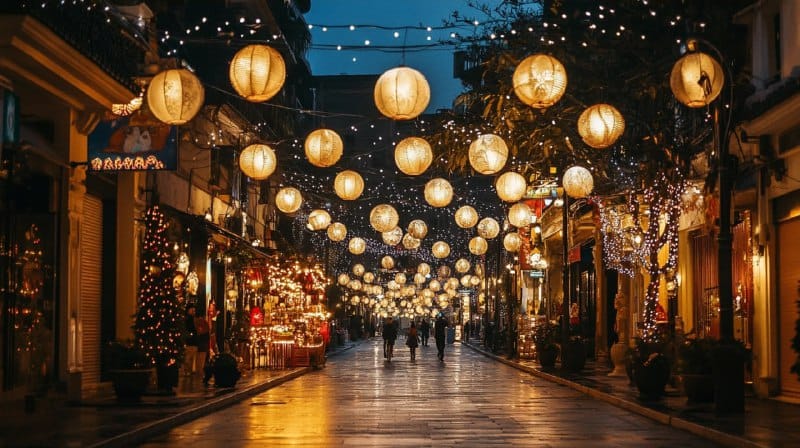
The second most popular tradition is to eat KFC on Christmas, thanks to a successful marketing campaign in the 1970s. Many people place their orders weeks in advance to secure a special Christmas meal set, often including fried chicken, cake, and champagne.
Russia
In Russia, Christmas is celebrated on January 7th, according to the Eastern Orthodox Church calendar. Christmas celebrations are quieter compared to New Year's Eve, which is a much larger and more widely celebrated holiday in Russia. Yet, it remains a family-oriented time, and people spend it in the warmth of the home. Some people attend a midnight church service where families come together to honor the birth of Christ.
As for meals, Russians can either go to a restaurant or prepare dishes that are enjoyed during both New Year and Christmas.
- Kompot — a traditional drink made from dried fruits, such as apples, pears, and berries, with a small amount of sugar boiled together to create a sweet beverage.
- Fish salad "selyodka pod shuboy" (herring under a fur coat) — a layered salad with herring, vegetables (including beetroot, carrots, and potatoes), and mayonnaise.
- Pirozhki — small, savory pastries filled with various ingredients like cabbage, meat, or mushrooms. These are often enjoyed as snacks during the holiday meal.
- Russian salad "Olivier" — a classic and beloved dish in Russia, especially during the winter holidays. It contains potatoes, hard-boiled eggs, sausage or chicken, peas, pickled cucumbers, onions, and mayonnaise.
Finland
In Finland, Christmas celebrations typically last from December 24th (Christmas Eve) to January 6th. The most important day is Christmas Eve, when families gather for festive meals, exchange gifts, and visit cemeteries to light candles for loved ones. Christmas Day (December 25th) is a quiet time for rest and family, while Boxing Day (December 26th, Tapaninpäivä) is often spent visiting friends or being engaged in outdoor activities. Some families keep decorations up and continue enjoying festive treats until this date.
Sweden
Sweden is known for its unique traditions, including the celebration of holidays according to the Swedish calendar, or "julkalender," which marks the countdown to Christmas with daily treats and special TV programs. Another beloved tradition is "fika", a social coffee break enjoyed with pastries, often shared with friends or coworkers. Fika is more than just a coffee break, it's a time to relax and connect.
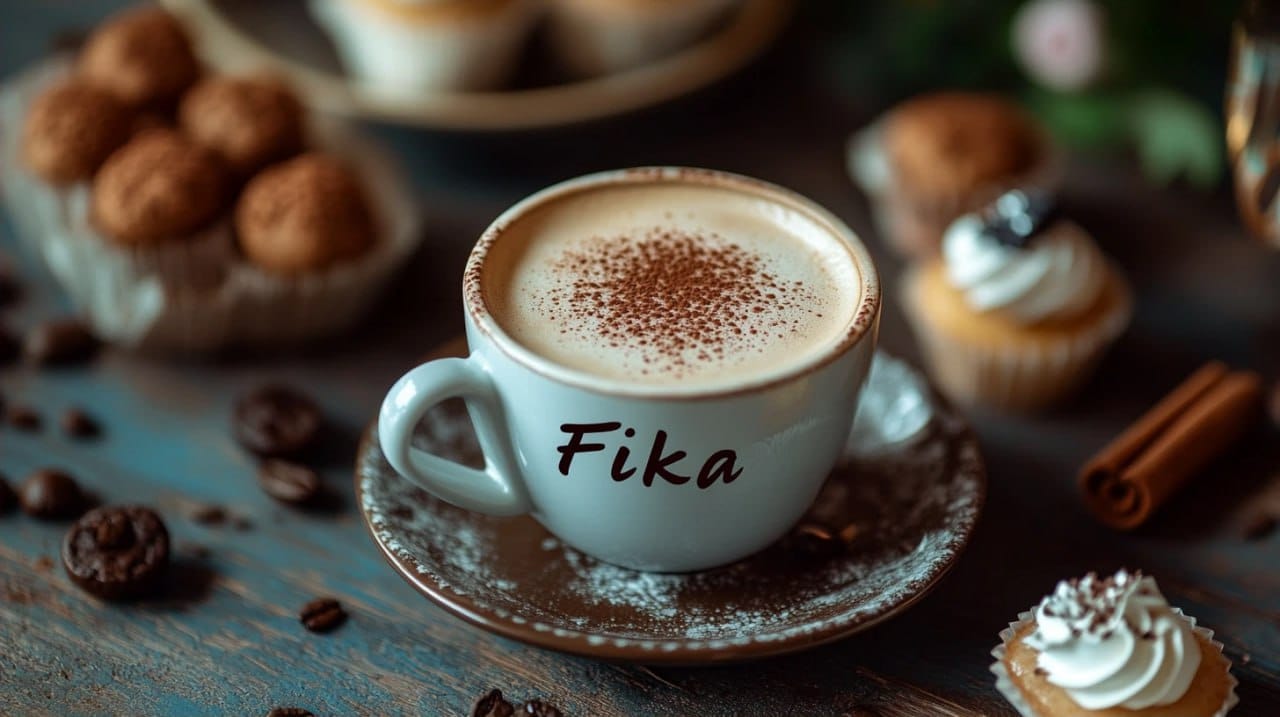
Philippines
The Philippines is known for having the longest Christmas celebration in the world, starting as early as September and lasting until early January. One of the most iconic traditions is the parol, a star-shaped lantern made of bamboo and colorful paper, symbolizing hope. Another common tradition is Simbang Gabi, a series of nine masses held from December 16 to 24, where church attendees believe that completing all nine masses grants their wishes.
Caroling is another unique practice, where children and even adults go from house to house singing Christmas songs in exchange for small gifts or money. Lastly, Filipinos celebrate Three Kings’ Day on the first Sunday of January, marking the end of the season with parades and special masses, making their Christmas the longest and most festive in the world.
In the Philippines, families celebrate Noche Buena, a grand Christmas Eve feast featuring local dishes like lechon and queso de bola. Lechon, a whole roasted pig with crispy skin and tender meat, is the highlight of the meal, while queso de bola, a round, red-waxed cheese similar to Edam, is a holiday staple enjoyed with ham, bread, or wine.
Ethiopia
It is unusual that Christmas in Ethiopia, known as Genna, is celebrated on January 7 instead of December 25, as the country follows the ancient Julian calendar. Unlike the Western tradition of gift-giving, Ethiopian Christmas is more focused on religion, with people attending an all-night church service dressed in white traditional garments. The holiday is marked by special meals, including doro wat (spicy chicken stew) served with injera (flatbread), making it a deeply spiritual and communal occasion.
Another interesting fact about Christmas in Ethiopia is that it is preceded by a 43-day fast called Tsome Nebiyat, during which Christians abstain from meat and dairy, eating only plant-based foods. This fast is broken on Christmas Day with a feast. Additionally, Ethiopian Christmas celebrations are deeply rooted in Orthodox Christian traditions, with church services that include chanting, processions with candles, and hours of prayer, making it a solemn yet joyful occasion.
FAQs
Is Christmas officially celebrated in all the countries of the world?
No, Christmas is not officially celebrated in all countries. Some countries with predominantly non-Christian populations, such as Saudi Arabia or North Korea, do not recognize it officially. However, even in such places, some private communities may celebrate the holiday informally.
Do people in Antarctiсa celebrate Christmas?
Yes, people in Antarctica often celebrate Christmas, especially the scientists and staff who are working at research bases. They typically mark the occasion with festive meals, decorations, and small gift exchanges. Celebrations may vary, but often include international traditions since the teams are from around the world.
What Christmas traditions are common everywhere?
Common Christmas traditions around the world include decorating a Christmas tree, exchanging gifts, and sharing festive meals with family and friends. Many people also participate in religious services or gatherings. Singing Christmas carols and displaying lights and ornaments are also widely enjoyed traditions.

